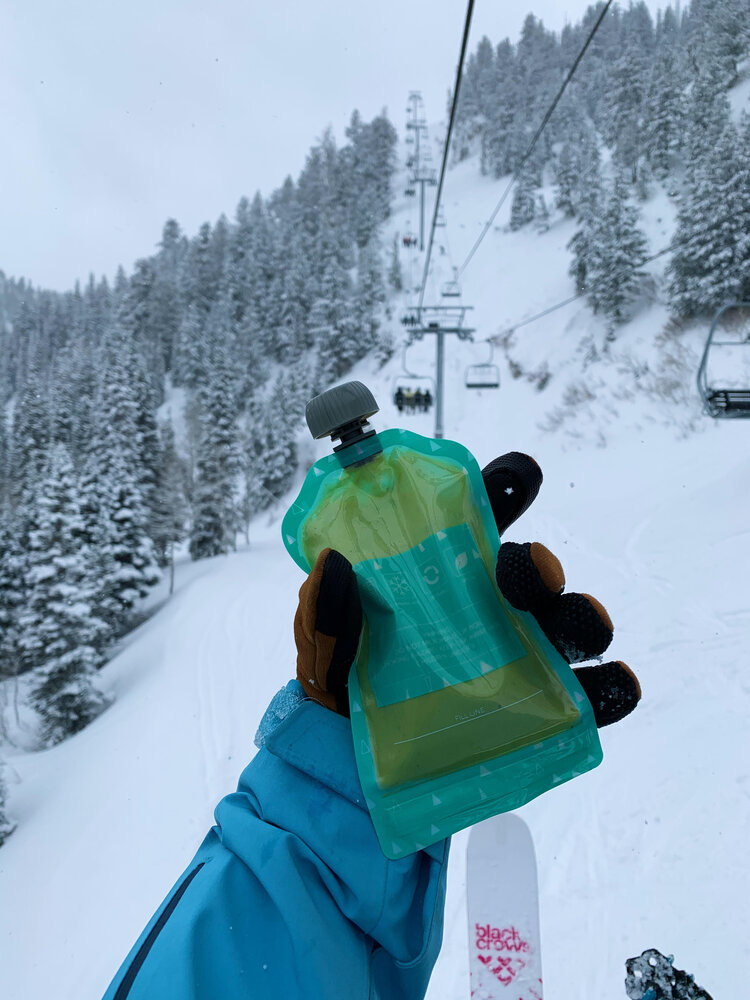Antioxidants are a hot topic in the sports nutrition world. Because they can reduce exercise-induced inflammation and strengthen the immune system, many athletes turn to supplements for an extra boost, but research is conflicted in that regard. By gaining some knowledge on antioxidants you can find the right balance to maximize performance.
What Are Antioxidants?
Antioxidants are compounds that help counteract the potentially damaging effects of free radicals in the body that can lead to tissue damage and contribute to various chronic diseases.
There are hundreds of substances that can act as antioxidants including various vitamins, minerals, and phytonutrients. Examples include vitamins A, C, E, anthocyanin, etc.
Theory in Support of Antioxidant Supplementation
Exercise can cause muscle damage, oxidative stress (increase in free radicals), and inflammation.
- Since exercise leads to increased free radicals, then antioxidant supplements could counteract them by preventing or reducing muscle damage and therefore muscle pain.
- Some athletes don’t meet nutritional recommendations for antioxidants from food.
- There some evidence that certain antioxidants can improve performance in endurance sports.
Theory Against Antioxidant Supplementation
- Antioxidant supplements may actually impair muscle function or delay some of the adaptations created by exercise because they interfere with cell signaling functions of free radicals, which affects muscular performance.
- They don’t seem to lead to better outcomes compared to placebo regarding muscle function, inflammation, redox status (free radical removal) after eccentric exercise (think bicep curl).
- Free radicals can actually be beneficial in certain amounts. That amount is currently unknown
- Food sources contain a vast amount of other substances that also play a beneficial role in the body.
- Supplements generally contain much larger doses than what can be reasonably consumed from food.
- There are differences in chemical composition of antioxidants in foods verses supplements which may affect utilization. (A vitamin may have a handful of chemical forms)
- Additionally, the long-term effects of high antioxidant doses are unknown.
There’s a small body of literature evaluating the relationship between antioxidants and exercise performance/recovery. While supplement use is likely unwarranted and potentially unfavorable, antioxidants from whole foods are likely beneficial.
It’s likely more advantageous to consume antioxidants from a variety of whole food sources than supplements to improve recovery and athletic performance.
I’ll dive into some studies on antioxidant supplements and whole food sources in relation to athletic performance/recovery.
Vitamin C – Involved in collagen synthesis, which is really important for soft tissue repair. It’s also involved in neurotransmitter formation (think brain health) and oxidation of fatty acids (helping with breakdown). Adequate intake can protect against developing upper respiratory tract infections in endurance and ultra-endurance athletes.
Food Sources – citrus fruits, peppers, strawberries, cruciferous and leafy vegetables
How Much (Men) – 90 mg/day, Women: 75mg/day | 1 c chopped broccoli: 80 mg, 1 orange: 50 mg
Vitamin E – Vitamin E is a family of fat-soluble compounds that prevent free radical damage to cell membranes and play a role in immune function.
- Dietary vitamin E intakes in athletes tend to be lower than other antioxidants.
- Vitamin E intakes are lower than intake of other antioxidants in female figure skaters, heptathletes, and male/female rowers.
- An extensive literature review in 2009 on supplementing vitamins C and E alone or combined concluded little evidence to support its protection against muscle damage.
Food Sources – nuts, seeds, wheat germ, avocado, plant based oils
How Much – 15 mg/day for both men and women | 1 oz almonds: 7.3 mg, 2 T peanut butter: 3.2 mg
Polyphenols – Polyphenols are a large branch of phytochemicals. They play a role in the immune system, have anti-inflammatory properties, and scavenge for free radicals. These are not required by the body to function, but play protective roles. EGCG, Anthocyanins, elligatannins, and betalains are referenced below for their potential performance/recovery enhancement.
EGCG – It’s been studied for its effect on muscle damage, and supplements reduced muscle soreness compared to placebo, but it doesn’t seem to be effective in boosting performance, or any differences in lactic acid markers and other lab markers of stress/muscle damage.
Food Sources – green tea and matcha green tea. (Matcha contains twice the amount as leaf.)
How Much – n/a as it is not a required nutrient. Try replacing your morning or afternoon cup of coffee for matcha.
Anthocyanins
- Responsible for red, purple, and blue pigments in many fruits and vegetables.
- There are FIVE studies evaluating tart cherry juice on exercise performance and/or recovery. Most showed positive results for muscle recovery
- No differences in markers of muscle damage
- Markers for oxidative stress and inflammation markers varied
Food Sources – Tart cherry juice, dried tart cherries, blueberries, blackberries, pomegranates, plums
How much – It is not a required nutrient by the body, but most of the studies evaluated above used 8-24 oz tart cherry juice daily. Try using tart cherry juice mixed with sparkling water and a citrus wedge for a recovery mocktail. 2 cups/day of fruit is recommended so try including berries daily as part of your servings. You can also find dried tart cherries in most grocery stores.
Ellagitannins
- Two studies evaluated pomegranate juice on muscle damage
- Pomegranate extract reduced muscle force loss, reduced soreness in elbow flexor muscles, but did not have impact on knee extensor muscles.
- It did not impact other lab markers of inflammation.
Food Sources – Pomegranates, berries, pecans, walnuts
How Much – n/a It is not a required nutrient by the body. Pomegranate juice would also make a great recovery mocktail. Include a serving of nuts daily (remember, these have vitamin E as well!)
Betalains
- One study isolated betalains into a concentrate from beetroot, removed the nitrates and sugar and administered to competitive triathletes in running trials. Results suggested improved performance and recovery in running.
Food Sources – Beets
How Much – n/a as it is not a required nutrient. However, it’s recommended to consume at least 3 cups of vegetables per day, so try incorporating beets into your meals regularly. Add them to smoothies, puree and mix with mashed potatoes or hummus, or shred raw beets and add them to muffin mix.
These snippets of literature are by no means comprehensive, but I hope the potential benefits of the above antioxidants encourage you to diversify the foods you eat. Consuming vegetables and fruits in a variety of colors will ensure you’re consuming a variety of antioxidants that will not only improve performance, but your overall health as well.
Sources
Sousa, Monica. “Dietary Strategies to Recover from Exercise-Induced Muscle Damage.” International Journal of Food Sciences and Nutrition, vol. 65, no. 2, 31 Oct. 13AD, pp. 151–163., doi:10.3109/09637486.2013.849662.
Peak JM. Vitamin C: effects of exercise and requirements with training. Int J Sport Nutr Exerc Metab. 2003;13(2):125-151.
Hemila H, Chalker E. Vitamin C for preventing and treating the common cold. Cochrane Database Syst Rev. 2013;1:CD000980.
Mullins VA, Houtkooper LB, Howell WH, Going SB, Brown CH. Nutritional status of US elite female heptathletes during training. Int J Sport Nutr Exerc Metab. 2001;11(3):299-314
Braakhuis AJ, Hopkins WG, Lowe TE. Effect of dietary antioxidants, training, aned performance correlates on antioxidant status in competitive rowers. Int J Sports Physiol Perform. 2013;8(5):565-572.
Taghiyar, Maryam et al. “The effect of vitamin C and e supplementation on muscle damage and oxidative stress in female athletes: a clinical trial.” International journal of preventive medicine vol. 4,Suppl 1 (2013): S16-23.
https://www.consumerlab.com/news/is+matcha+a+better+form+of+green+tea/10-14-2015/
Kerksick, Chad M., et al. “Intramuscular Adaptations to Eccentric Exercise and Antioxidant Supplementation.” Amino Acids, vol. 39, no. 1, 2009, pp. 219–232., doi:10.1007/s00726-009-0432-7.
Trombold, Justin R., et al. “Ellagitannin Consumption Improves Strength Recovery 2-3 d after Eccentric Exercise.” Medicine & Science in Sports & Exercise, vol. 42, no. 3, 2010, pp. 493–498., doi:10.1249/mss.0b013e3181b64edd.
Trombold, Justin R, et al. “The Effect of Pomegranate Juice Supplementation on Strength and Soreness after Eccentric Exercise.” Journal of Strength and Conditioning Research, vol. 25, no. 7, 2011, pp. 1782–1788., doi:10.1519/jsc.0b013e318220d992.
Montenegro, Cristhian F., et al. “Betalain-Rich Concentrate Supplementation Improves Exercise Performance and Recovery in Competitive Triathletes.” Applied Physiology, Nutrition, and Metabolism, vol. 42, no. 2, 2017, pp. 166–172., doi:10.1139/apnm-2016-0452.
Karpinski, Christine, and Christine Rosenbloom. Sports Nutrition: a Handbook for Professionals: Sports, Cardiovascular, and Wellness Nutrition Dietetics Practice Group. Academy of Nutrition and Dietetics, 2017.



